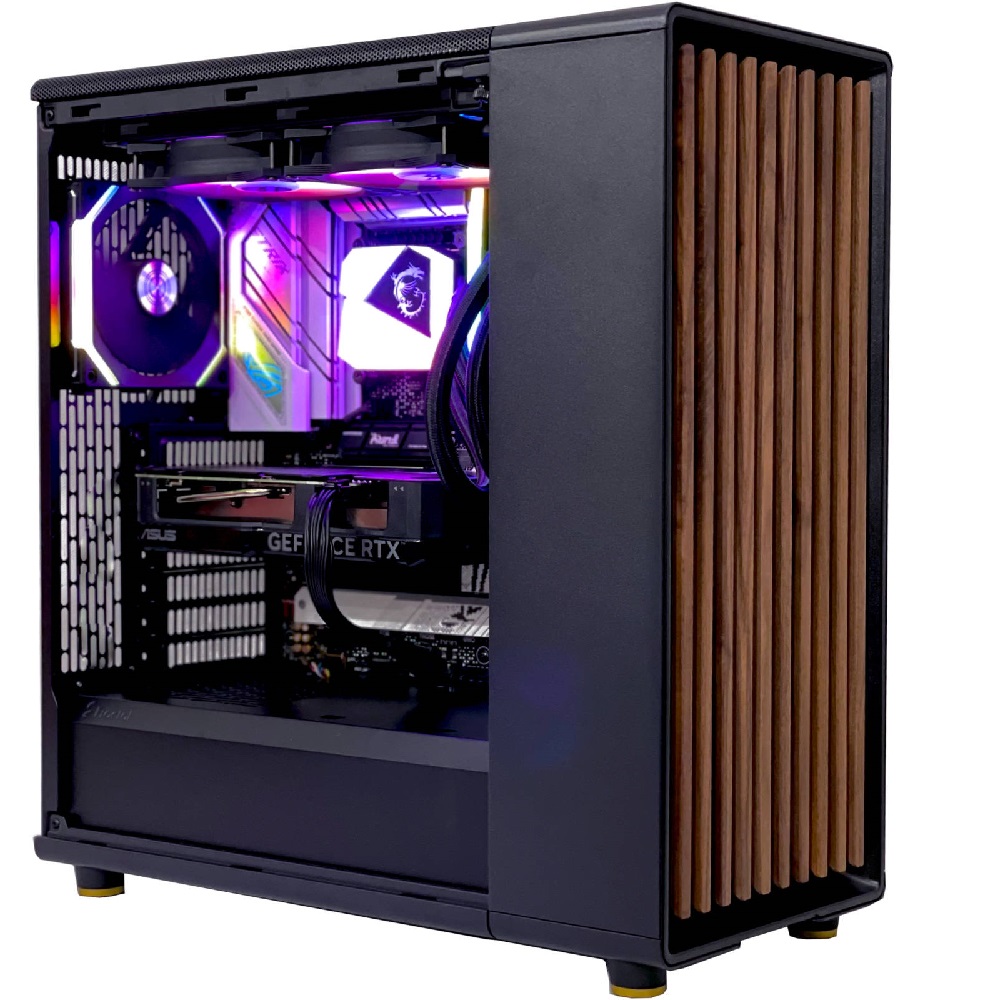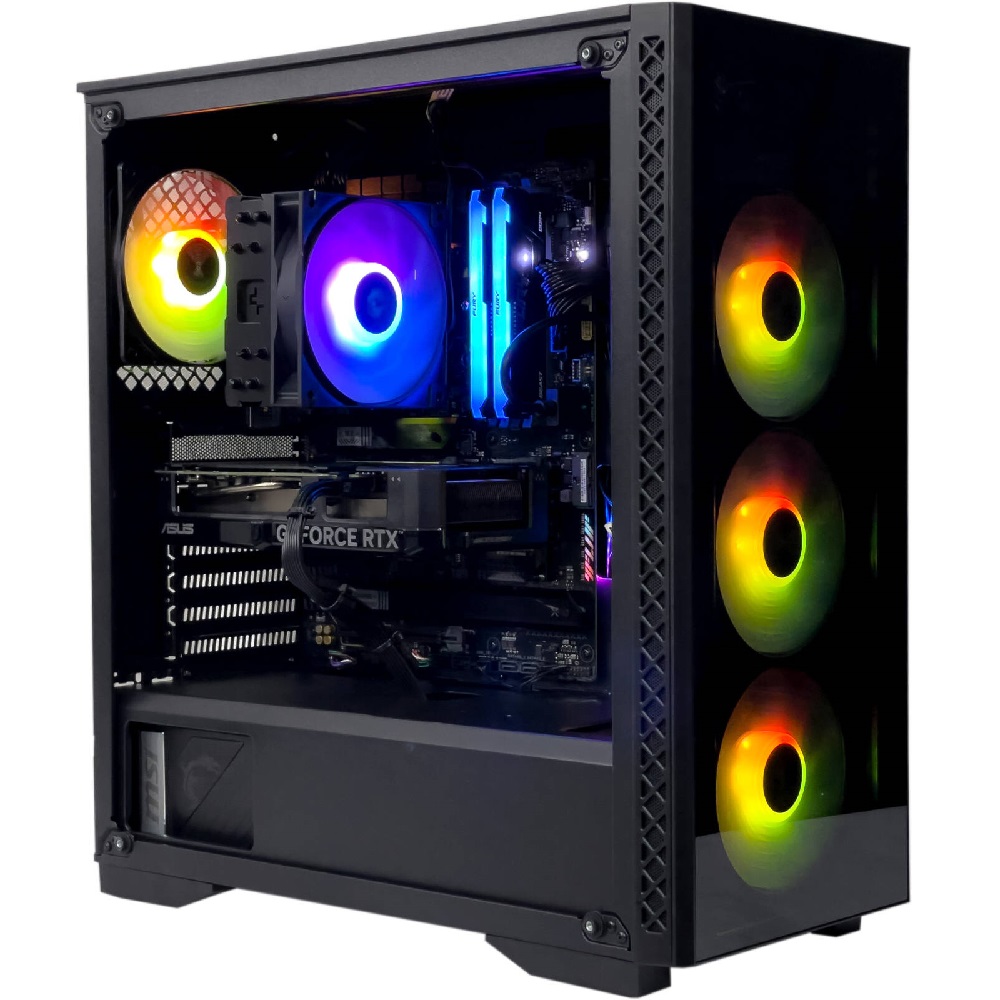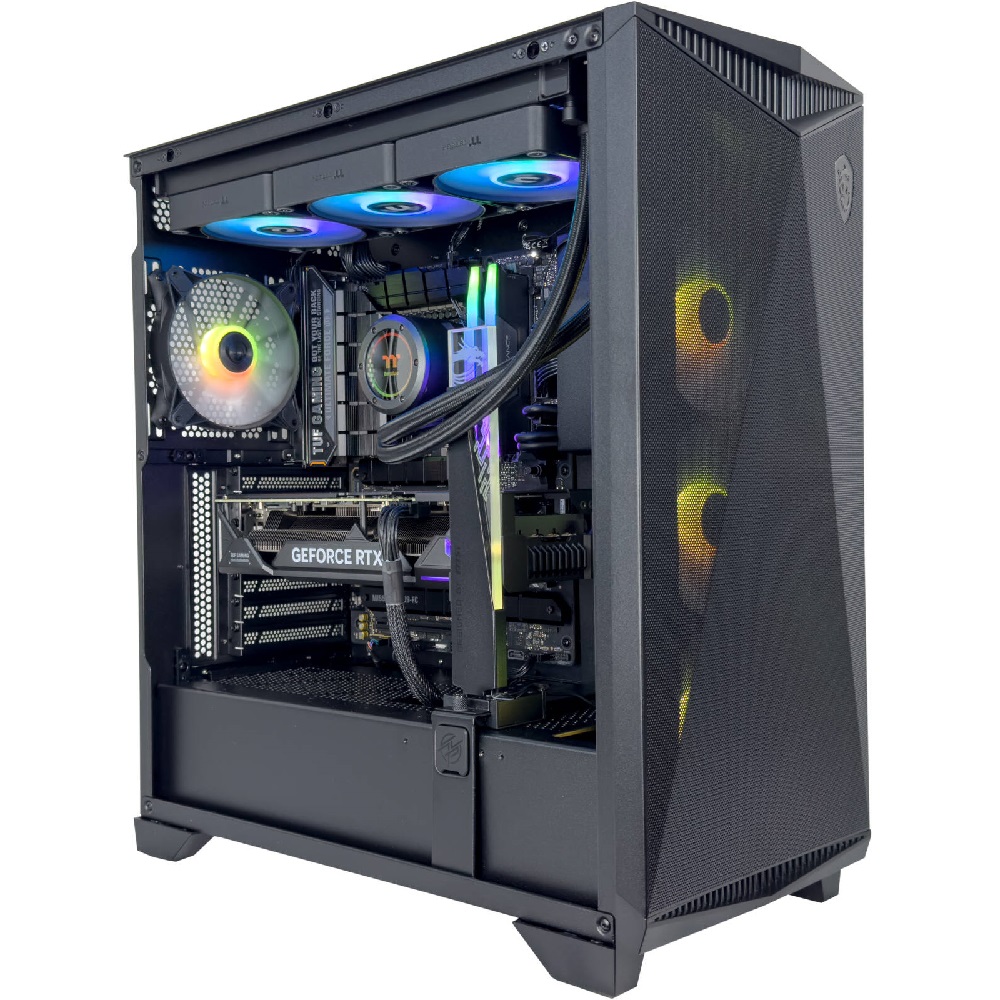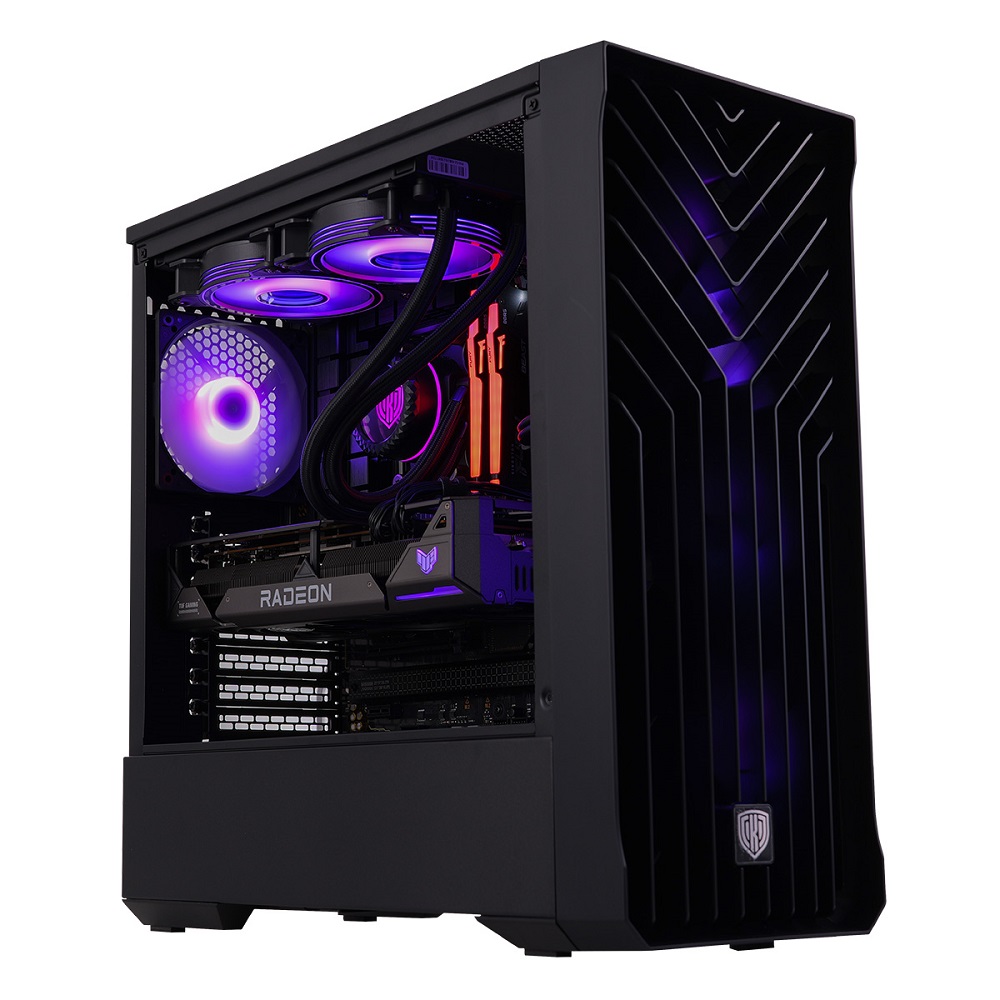Essential Components for a Mid-Range PC
Selecting the right components for a mid-range computer can be a balancing act. With the correct choices, you can achieve a PC that handles demanding tasks without breaking the bank. Here, we’ll discuss the essential elements you’ll need and what to look for.
Choice of Processor
Your CPU is the brain of your computer. Look for recent-generation processors with at least four cores. AMD and Intel offer solid mid-range options that deliver robust performance for general computing and gaming.
Selecting the Right Motherboard
The motherboard is your PC’s foundation. Choose one that supports your CPU and has enough slots for future upgrades. Look for durable components and built-in features that match your needs.
RAM Considerations
RAM is critical for multitasking. Aim for at least 8GB for a mid-range system, but 16GB is better for gaming and heavy applications. Ensure it’s compatible with your motherboard’s speed and type.
Graphics Card Options
A dedicated graphics card can boost performance in video editing and games. Mid-range computer systems benefit from GPUs like NVIDIA’s GTX or AMD’s RX series. Balance cost with the performance you seek.
Storage Solutions: SSDs vs HDDs
Solid State Drives (SSDs) offer faster boot and load times. Hard Drives (HDDs) are more affordable and provide more storage. A combination of both gives you speed and capacity.
Power Supply and Case
A reliable power supply unit (PSU) is crucial. Go for 80 Plus certification for efficiency. Your case should have good airflow and room for components. Cable management features help keep things tidy.
Balancing Performance with Budget
To build a mid-range computer, it’s vital to couple good performance with a sensible budget. Knowing where to allocate funds ensures your PC will be both capable and cost-effective.
Where to Splurge and Where to Save
Splurge on the CPU and GPU for longevity and better performance in games and applications. Opt for a reliable SSD for the operating system and frequently used software to benefit from quicker boot and load times. Saving can be done on the case and, potentially, the RAM, where the premium features of high-end options are less crucial for a mid-range build.
A mid-range motherboard with necessary features for future upgrades can also offer savings without sacrificing too much functionality. Power supplies, however, should not be skimped on – aim for that 80 Plus certification for safety and efficiency. HDDs can be a place to save if you opt for an SSD for the main drive, as they provide bulk storage at a lower cost.
Price-Performance Sweet Spots
Finding the price-performance sweet spots is key for a mid-range computer. AMD and Intel both offer CPUs that present excellent value, delivering strong performance without the premium price of high-end processors. Mid-tier GPUs like the NVIDIA GTX series or AMD RX series also hit that sweet spot, giving you great gaming performance for much less than the top-of-the-line models.
For RAM, 16GB is a fantastic middle ground for price to performance, especially for gaming and multitasking. SSDs have come down in price and offer a significant performance benefit over HDDs, making them a smart investment. Cases and additional cooling can be modest, as there are many affordable options that don’t compromise on the necessary features to maintain a stable system.
The Importance of Compatibility
When assembling a mid-range computer, compatibility is a key factor for smooth operation. Each part must work well with others to prevent bottlenecks and ensure best performance.
Ensuring Hardware Synergy
Choosing components that work in harmony is essential. This means verifying that the CPU, motherboard, RAM, and GPU not only fit together but also operate efficiently as a unit. Use manufacturer compatibility lists to guide your selections. Double-check socket types, RAM frequency support, and PCIe slot versions to avoid compatibility issues.
For optimal synergy, match the motherboard chipset to the CPU. This can unlock additional features and performance gains. Similarly, consider the GPU’s power requirements and if the PSU has the necessary connectors. RAM should have matching specs across all sticks, and storage interfaces on the motherboard must align with your SSD or HDD choices.
BIOS Settings and Firmware Updates
The BIOS is the core software that controls your hardware. To ensure all parts run effectively, it may require tweaking. Regularly check for firmware updates for your motherboard. These updates often enhance compatibility or fix bugs.
Before booting the system for the first time, familiarize yourself with the motherboard’s manual. This will help you navigate BIOS settings with ease. Update the BIOS if a newer version is available. This process is usually straightforward, following the manufacturer’s instructions closely. Set the correct RAM frequency and enable XMP profiles if available to get the maximum performance. Check that all drives are recognized and that the boot order aligns with your system setup preferences.
By paying attention to compatibility and BIOS settings, your mid-range computer will have a solid foundation for stable and efficient performance.
Upgrade Paths for Growth
To ensure your mid-range computer remains relevant and powerful over time, consider how it can be upgraded.
Scalable Components
Scalable components provide flexibility for future improvements. When selecting parts for your mid-range computer, choose components known for their scalability, which allows for better longevity and cost efficiency.
- CPU: Invest in a CPU with an upgrade path within the same socket type, facilitating an easy swap in the future.
- GPU: Graphics cards can be updated as new games and software increase demands.
- RAM: Start with a solid base like 16GB and choose a motherboard with extra slots for adding more later.
- Storage: With additional SATA ports or M.2 slots, you can add more storage drives as needed.
By choosing scalable components, you create a solid foundation that can evolve with technology without requiring a complete system overhaul. This strategy offers an economical way to keep pace with technological advances.
Planning for Future Upgrades
Planning is critical for future-proofing your mid-range computer. Consider these points:
- Budget for Upgrades: Set aside a part of your budget for future investments in hardware.
- Keep Informed: Stay updated on tech trends to make informed decisions on timely upgrades.
- Compatibility Checklist: Keep a checklist of your current system specs to match new components accurately.
Don’t forget that technology changes rapidly, and what’s considered mid-range today might not be tomorrow. Plan your upgrades with foresight, and your mid-range computer will deliver performance and growth for years to come.
Cooling Solutions for Stable Performance
Good cooling is essential to maintaining a mid-range computer’s performance. The method of cooling can affect both the longevity of components and the noise level of your system.
Air vs Liquid Cooling Systems
For many mid-range computers, air cooling systems are effective and budget-friendly. They involve heatsinks and fans that dissipate heat away from critical components. Liquid cooling systems, although more expensive, offer better thermal performance and are quieter. They use a loop of coolant and a radiator to remove heat.
When choosing between air and liquid cooling systems, consider your system’s heat generation and your noise tolerance. Air cooling can handle most mid-range computer loads efficiently. If you’re pushing your system with intense gaming or video editing, liquid cooling might be worth the investment.
Managing Internal Airflow
Strong airflow is vital for keeping temperatures down. Here are key steps to manage airflow:
- Case Choice: Select a case with good ventilation and fan placements.
- Fan Configuration: Install fans for both intake and exhaust to create a steady flow of air.
- Cable Management: Properly organized cables prevent airflow blockages.
- Dust Filters: Maintain clean dust filters to ensure unobstructed air movement.
By optimizing both cooling systems and internal airflow, your mid-range computer will run cool and stable, even under load.
Assembly Tips for First-Time Builders
Building a mid-range computer can be a rewarding experience. With the right guidance, even beginners can assemble their PC confidently. Below, find tips to help first-time builders start off on the right foot.
Organizing Your Workspace
Having an organized workspace is key. Clear a large, clean surface to lay out your components. Group similar parts together. This will save time during assembly. Keep tools like screwdrivers and thermal paste at hand. Ensure good lighting to avoid any mistakes.
Step-by-Step Assembly Guide
Start by installing the power supply into the case. Then, secure the motherboard, aligning it with the standoffs. Insert the CPU, applying thermal paste correctly. Add RAM into its slots with care. Install the graphics card in the PCIe slot. Mount storage drives and connect all cables. Finally, close the case and connect it to your monitor and peripherals.
Troubleshooting Common Issues
First-time builders might face issues like the PC not booting. Check all power connections first. Make sure the RAM and GPU are firmly seated. If there’s no display, verify the monitor connection. Ensure that the storage drive containing the operating system is properly connected. If problems persist, consult your motherboard manual or seek online forums for assistance.
Best Practices for Software Installation
After assembling your mid-range computer, the next step is installing the software. This step is as crucial as selecting the right hardware.
Operating System Selection and Setup
Choose an operating system (OS) that suits your needs. For many, Windows is the go-to due to its user-friendly interface and broad application support. Linux is another excellent choice, especially for those who prefer open-source solutions. Installing your OS should be the first task. Create a bootable USB drive with the OS installer. Boot from this drive and follow the on-screen instructions to complete the setup. After installation, customize settings to your preference.
Driver Installation and Updates
Drivers are software pieces that allow your OS to communicate with hardware components. After the OS installation, install the latest drivers for your motherboard, GPU, and other peripherals. Visit the manufacturers’ websites to download the most recent versions. Keep your drivers updated to ensure optimal performance and security.
Security Software Considerations
Security should never be neglected. Install reliable antivirus software to protect your system from malware and other threats. Consider a firewall to help block unauthorized access. Regularly update your security software to defend against the latest risks.
By following these software installation practices, your mid-range computer will have a solid software foundation that complements its hardware capabilities.
Enhancing Your Computing Experience
Once you have assembled your mid-range computer, it’s time to enhance your computing experience. The peripherals you choose can significantly influence productivity, comfort, and enjoyment. Customization and personalization also play substantial roles in making your computer truly your own.
Peripheral Selection
Choosing the right peripherals can transform your computing sessions. For a start, a responsive and comfortable keyboard will make typing more pleasant. Look for one with ergonomic features if you spend long hours typing. A precise mouse is another must-have, especially for gaming or design work, where accuracy is paramount.
Monitors should not be overlooked. A good display will protect your eyesight and improve your overall experience. Opt for a monitor with a high refresh rate and low response time if gaming is a priority. For creative work, color accuracy and a higher resolution might be more important.
Other peripherals to consider include:
- Speakers or Headphones: For clear and immersive audio.
- Webcam: For video calls and streaming if your monitor doesn’t have one built-in.
- External Hard Drives: For additional storage and backups.
Each peripheral should complement your mid-range computer’s performance and your own usage habits.
Customization and Personalization Options
Customizing your computer setup is not just about aesthetics; it’s about creating a comfortable and efficient workspace. Arrange your peripherals to minimize clutter and ensure everything is within reach. Organize cables to keep the area neat and safeguard against accidents.
Personalization extends to software as well. Customize the look and feel of your operating system with themes, wallpapers, and color schemes. Utilize software tools to tweak performance settings or set up macros for repetitive tasks.
In conclusion, optimizing your setup with the right peripherals and customization enhances not just the performance but also the pleasure of using your mid-range computer.



